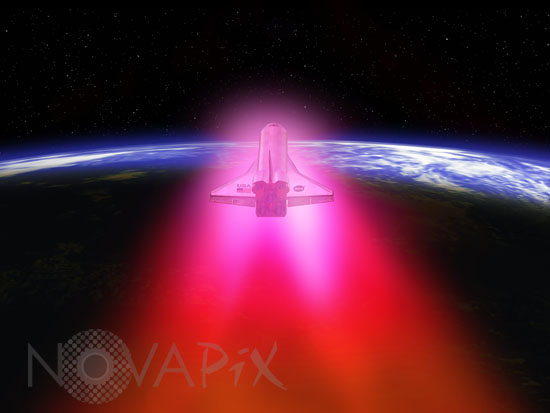Photo Agency - Astronomy - Space - Nature

Space Shuttle reentry - Artwork
auteur: Walter B. Myers/Novapix
référence: e-sts99-00104
Image Size 300 DPI: 33 * 25 cm
In order for the Space Shuttle to return to Earth it must shed 18,000 miles per hour of velocity and descend low enough to make an unpowered glide to a landing strip. With 115 tons of vehicle traveling fast enough to circle the globe once every 90 minutes, there is a tremendous amount of kinetic energy to dispose of. The Shuttle disposes this energy like every other manned space vehicle: it uses the Earth's atmosphere to convert its kinetic energy into heat. The Shuttle does this by slowly descending into the atmosphere bellyside-down at a 40 degree angle. This presents a large, blunt surface to the rushing air that continues to slow the orbiter for the next 16 minutes.
Through a combination of friction and compression, the temperature of the air around the Shuttle rises to 3,000 °F, hot enough to ionize the air into a glowing plasma trail that extends for miles behind the Shuttle. One effect of this plasma is to block all radio contact between the orbiter and ground control during the duration of reentry.
The Shuttle withstands the punishment of reentry via a thermal protection system that consists of thousands of individual silica tiles. The tiles, which are essentially bricks of very pure quartz sand, prevent heat transfer to the underlying orbiter aluminum skin and structure.
Keywords for this photo:
EARTH - EARTH FROM SPACE - HEAT SHIELD - ILLUSTRATION - MANNED SPACEFLIGHT - SPACE - SPACE SHUTTLE - SPACESHIP - TEMPERATURE - TILE -
Contact : Stéphane Aubin +33-(0)9-51-26-53-76
© Novapix - All rights reserved






